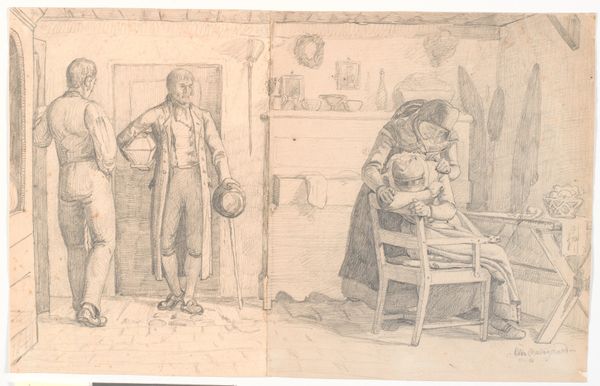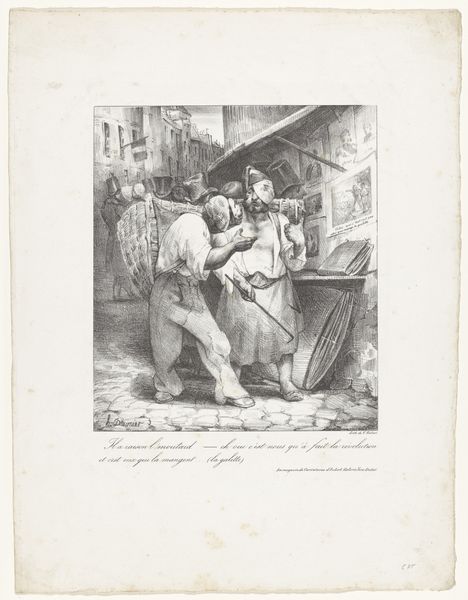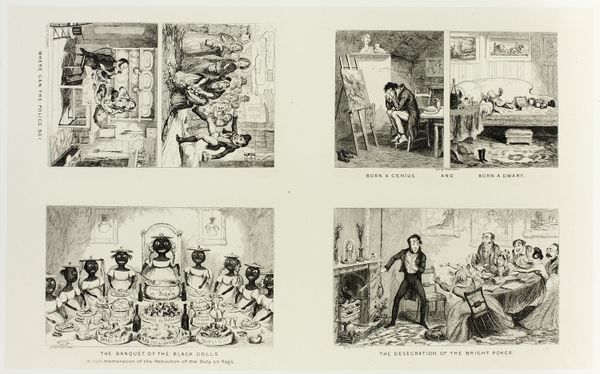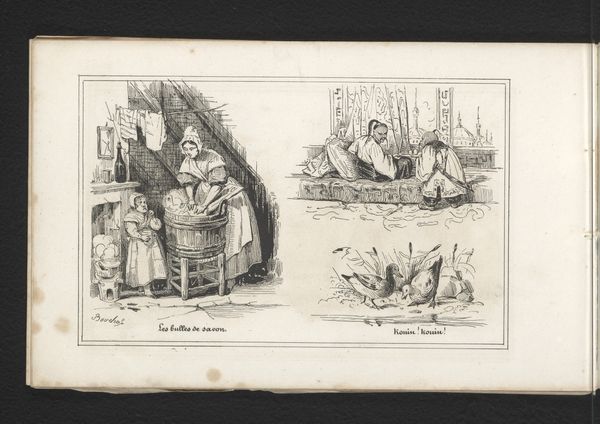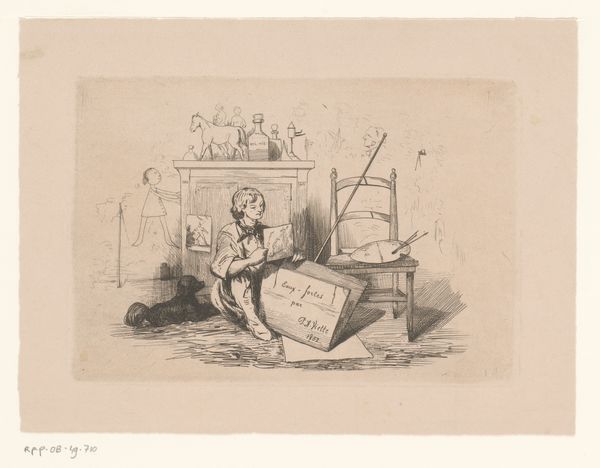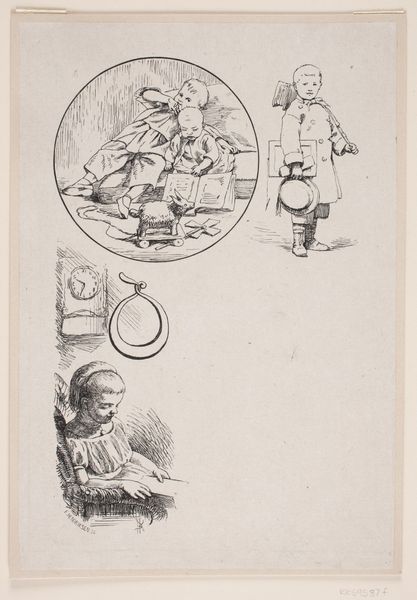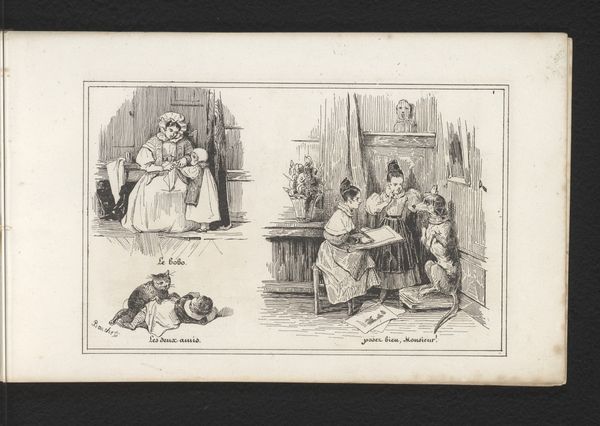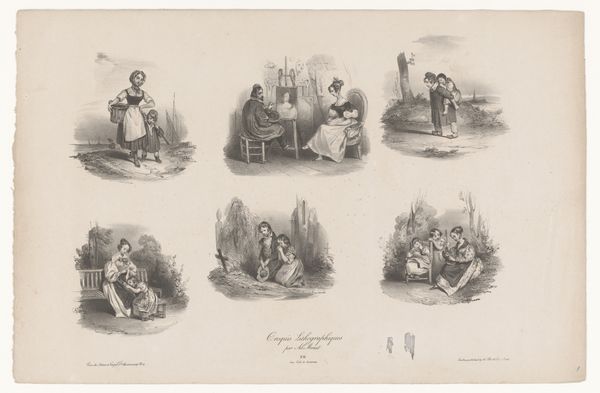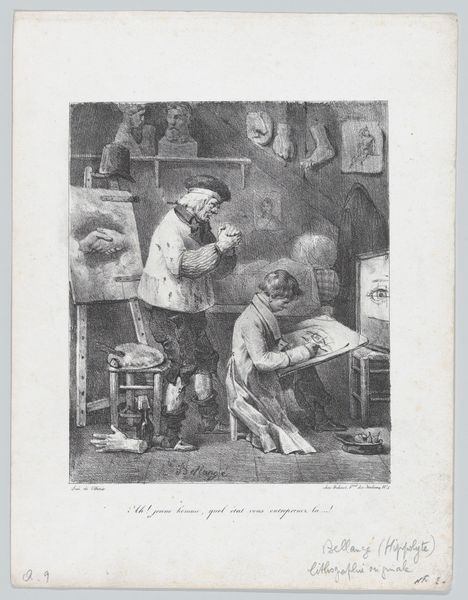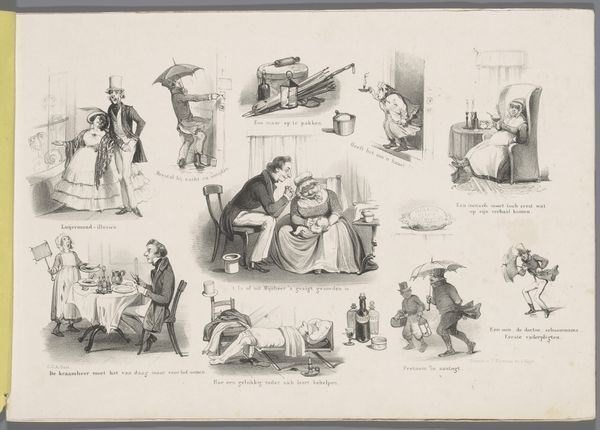
Schoenmaker in zijn winkel en krantenlezende vrouw in portiersloge Possibly 1833
0:00
0:00
drawing, lithograph, print, paper, pen
#
drawing
#
lithograph
# print
#
caricature
#
paper
#
pen
#
cityscape
#
genre-painting
#
realism
Dimensions: height 210 mm, width 282 mm
Copyright: Rijks Museum: Open Domain
Curator: Charles Ramelet’s lithograph and pen drawing on paper, “Schoenmaker in zijn winkel en krantenlezende vrouw in portiersloge,” possibly from 1833, presents us with two distinct scenes in a single composition. The realism of the style strikes me first. Editor: Immediately, the duality of the image commands attention. The contrast in postures and activities speaks volumes, no? One figure actively engaged in laborious craft, the other passively consuming news. It hints at very different modes of existence defined by access to materials. Curator: Indeed. The work highlights the formal arrangement of the scenes. The clear division emphasizes a semiotic contrast. The shoemaker, surrounded by tools and raw materials, is framed within the structured space of his workshop. His hunched posture underscores the labor-intensive nature of his work. Editor: Observe closely the lithographic process employed; it captures the textures and gritty realism of the shoemaker's environment so well. Notice the worn leather, the cluttered workspace - these elements showcase not just craft but the tangible, physical realities of labor, hinting at social divides and the politics embedded within seemingly mundane daily tasks. Curator: Precisely, and let's not overlook the compositional balance achieved through contrasting lines and forms. The shoemaker's bent figure mirrors the seated woman, albeit in a dynamic vs. static opposition, thus enhancing the dialogue between activity and repose. Editor: Consider the historical context of printmaking, particularly lithography. Its accessibility as a medium facilitated wider distribution and challenged elitist art traditions. Ramelet likely aimed for broader societal commentary, reaching a demographic deeply entrenched in industrial changes affecting material realities. Curator: The inscription too, adds layers to our interpretation. "Un homme patenté" hints at licensed or sanctioned labor. A commentary maybe, on social hierarchies through established trades versus free labor or those not able to access materials. Editor: I think you are right. Looking at her newspaper now, one can speculate that it represents a form of readily available "raw material" compared to that of our hardworking cobbler who is entrenched in older modes of production. This speaks volumes regarding power and the distribution of not just wealth, but knowledge during social change. Curator: Indeed, each tableau prompts a deeper interrogation into the realities of labor and leisure during this epoch. Editor: Precisely, its power comes from capturing an inflection point concerning production, material conditions, and access during a transforming era.
Comments
No comments
Be the first to comment and join the conversation on the ultimate creative platform.

